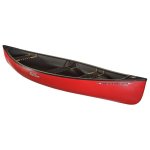Yes you read that right. For work. Some days I love my job!!!
We have a device called an M9 that looks like an overgrown boogie board. It includes the electronic magic necessary to record flow volume (CFM) of a stream, be it river, spring run, etc. We use it for documenting periodic spring discharge measurements. On a narrow run, we can rig a couple pulleys and slowly pull the device across the run with a glorified clothesline. On wider streams this is not feasible, especially if there is recreation traffic to contend with. The other part of the equation is for us to minimize disruption to the water beneath and near the device.
With that in mind, we are looking at pedal-drive SOT kayaks. A tandem would allow the stern “paddler” to manage the boat and the bow position would operate the M9. In this way we can ferry the device across the steam.
Some coworkers were advocating for 2 kayaks, but I suggested a canoe as the support half would be better because it facilitates easier and more secure cargo management. We have an Old Town Discovery 164. I had also looked at the OT Next as a nice support platform. A word on procurement- for us to buy a used boat, it would have to be in stock at a registered vendor, forget Craigslist etc. So we’re only looking at new. And no way would they let us buy an ultralight either
What I have found so far is that the price of a tandem SOT pedal drive kayak is rather high. A Next is considerably less expensive, though narrow (which I like) and perhaps the shorter/wider OT 119 Sportsman might be more friendly for staff. We’re not looking at overnight tripping and while I expect we’d use these boats for general field mapping, either the kayak, Next or the 119 would be useful.
Something that would help me provide info for this decision would be if I have any idea how well a pack style canoe would paddle with a single blade paddle. The kayak style seems like it might risk disrupting the water around the M9, but maybe not. I’d also love to hear your thoughts about the relative maneuverability between a pack style canoe vs a tandem SOT pedal drive. How much will mobility be cut if the forward position isn’t paddling? And finally a word about stability. Primary stability for the person operating the M9 is very important. That person will need to be able to lean over a bit while fiddling with the machine. I’m comfortable with a canoe that has good secondary stability, but most of the staff at work have it have used kayaks, fewer have or talk about using canoes. Though I have a couple converts
Do any of you have experience collecting water samples or fiddling with data collection devices from a small self powered boat? I’d love to hear about your experiences.
We have a device called an M9 that looks like an overgrown boogie board. It includes the electronic magic necessary to record flow volume (CFM) of a stream, be it river, spring run, etc. We use it for documenting periodic spring discharge measurements. On a narrow run, we can rig a couple pulleys and slowly pull the device across the run with a glorified clothesline. On wider streams this is not feasible, especially if there is recreation traffic to contend with. The other part of the equation is for us to minimize disruption to the water beneath and near the device.
With that in mind, we are looking at pedal-drive SOT kayaks. A tandem would allow the stern “paddler” to manage the boat and the bow position would operate the M9. In this way we can ferry the device across the steam.
Some coworkers were advocating for 2 kayaks, but I suggested a canoe as the support half would be better because it facilitates easier and more secure cargo management. We have an Old Town Discovery 164. I had also looked at the OT Next as a nice support platform. A word on procurement- for us to buy a used boat, it would have to be in stock at a registered vendor, forget Craigslist etc. So we’re only looking at new. And no way would they let us buy an ultralight either
What I have found so far is that the price of a tandem SOT pedal drive kayak is rather high. A Next is considerably less expensive, though narrow (which I like) and perhaps the shorter/wider OT 119 Sportsman might be more friendly for staff. We’re not looking at overnight tripping and while I expect we’d use these boats for general field mapping, either the kayak, Next or the 119 would be useful.
Something that would help me provide info for this decision would be if I have any idea how well a pack style canoe would paddle with a single blade paddle. The kayak style seems like it might risk disrupting the water around the M9, but maybe not. I’d also love to hear your thoughts about the relative maneuverability between a pack style canoe vs a tandem SOT pedal drive. How much will mobility be cut if the forward position isn’t paddling? And finally a word about stability. Primary stability for the person operating the M9 is very important. That person will need to be able to lean over a bit while fiddling with the machine. I’m comfortable with a canoe that has good secondary stability, but most of the staff at work have it have used kayaks, fewer have or talk about using canoes. Though I have a couple converts
Do any of you have experience collecting water samples or fiddling with data collection devices from a small self powered boat? I’d love to hear about your experiences.

